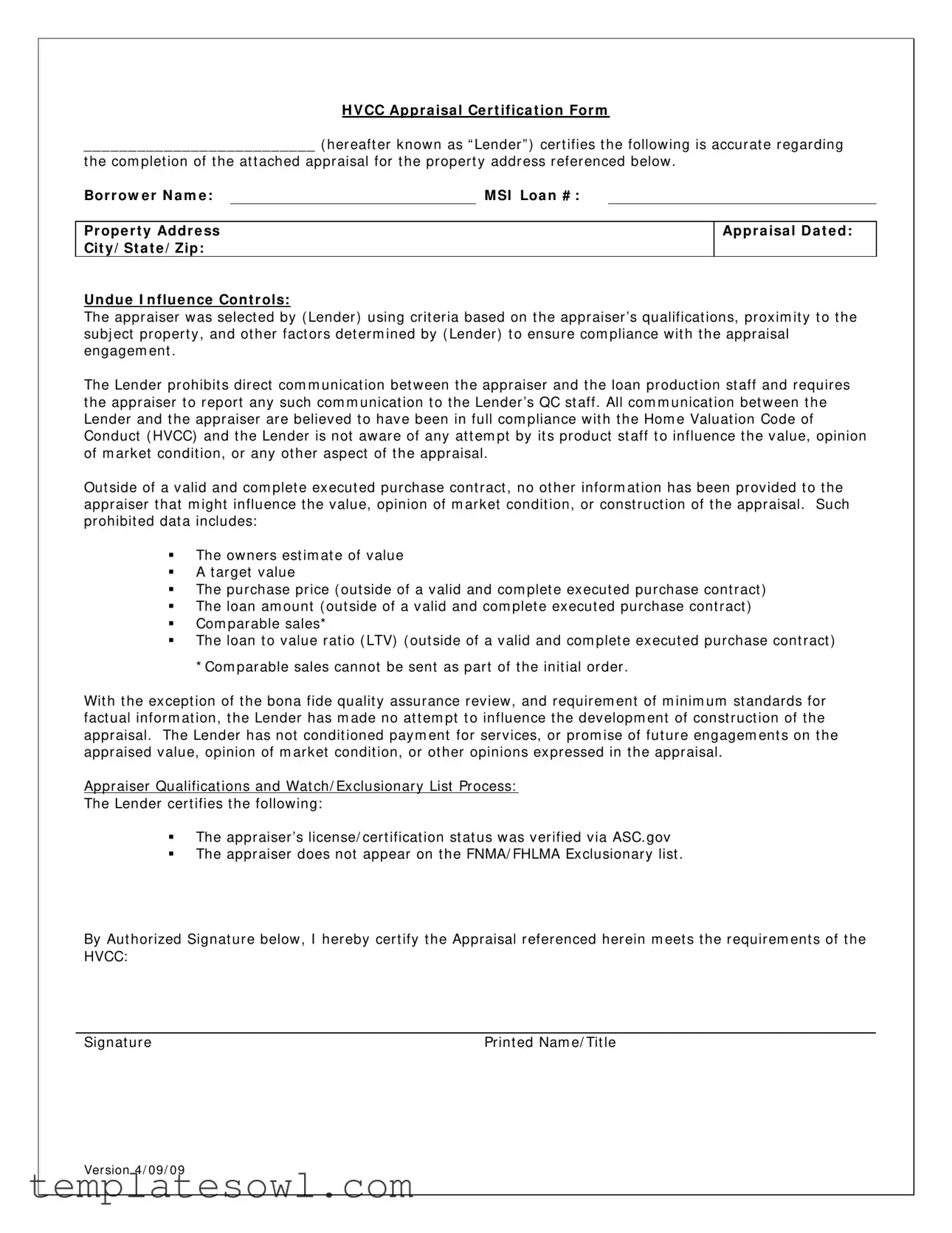What is the Appraisal HVCC form?
The Appraisal HVCC form is a certification document used by lenders to confirm that an appraisal has been completed according to the Home Valuation Code of Conduct (HVCC) standards. It outlines the processes followed in selecting the appraiser, ensures compliance with regulations, and asserts that the appraisal was not influenced by outside parties.
Who needs to fill out the Appraisal HVCC form?
The lender is responsible for filling out the Appraisal HVCC form. This includes presenting accurate information regarding the appraisal and confirming its adherence to the HVCC requirements.
What information is included in the Appraisal HVCC form?
The form contains essential details such as the borrower's name, loan number, property address, appraisal date, and a certification statement regarding the selection of the appraiser. It also lists the restrictions on communication between the appraiser and loan production staff to prevent undue influence on the appraisal's findings.
What are the restrictions on communication with the appraiser?
Direct communication between the appraiser and the loan production staff is prohibited by the lender. Instead, any necessary communication must go through the lender's quality control staff. The requirement is designed to uphold the integrity of the appraisal process and ensure compliance with the HVCC.
What prohibited information should not be provided to the appraiser?
The lender cannot provide the appraiser with details that might influence the appraisal, including the owner's estimate of value, a target value, the purchase price, the loan amount, comparable sales, or the loan-to-value ratio, unless as part of a valid and complete executed purchase contract.
How does the lender verify the appraiser's qualifications?
The lender certifies the appraiser's qualifications by verifying their licensing or certification status through the Appraisal Subcommittee (ASC) website. This ensures that the appraiser meets the necessary professional standards required for the appraisal process.
What is the significance of the exclusionary list?
The exclusionary list includes individuals who are disqualified from performing appraisals due to prior misconduct or unethical behavior. The lender certifies that the chosen appraiser does not appear on the FNMA/FHLMA exclusionary list, which is a crucial step in maintaining credibility in the appraisal process.
Is the lender allowed to influence the appraisal outcome?
No, the lender cannot condition payment for appraisal services on the appraised value or any opinions expressed in the appraisal. The lender must remain objective and ensure that the appraisal reflects an unbiased opinion of the property's market value.
What role does the authorized signature play in the Appraisal HVCC form?
The authorized signature on the Appraisal HVCC form serves as a certification by the lender that the appraisal meets HVCC requirements. It indicates that the lender takes responsibility for ensuring compliance with appraisal standards and recognizes the importance of impartiality in the appraisal process.

